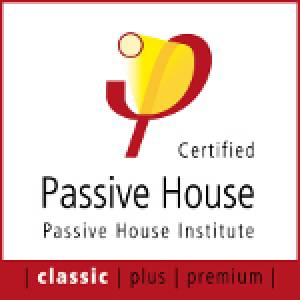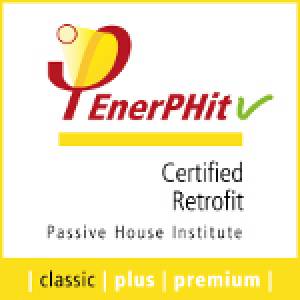Table of Contents
Building Certification
Building certification provides quality assurance and brings many advantages for all parties involved. The focus is on planning, because only practice-oriented planning can be translated into a functioning building at the construction site: Airtightness, thermal bridge free design, high-quality windows and installation, ventilation system and other building services must be designed in a targeted manner and coordinated with each other (in the professional world, this is referred to as integral planning). In this context, it is advisable to contact an accredited Building Certifier at an early stage of planning. At this stage, problems identified by the certifier can still be easily remedied.
The Building Certification Guide provides a clear summary of general information on certification (e.g. benefits, process, first steps). As of version 10c of the Criteria for Buildings PHI has integrated the content of the Building Certification Guide into the Criteria for Buildings document. PHI has discontinued the development of the Building Certification Guide as a separate document.
Passive Houses are not introduced by law or regulation - they are a voluntarily agreed standard. However, this standard is clearly and unambiguously defined: The Passive House Institute has formulated the criteria for Passive Houses for different building tasks (e.g. residential buildings, office- educational buildings). These are exclusively so-called “functional criteria”, i.e. individual structural or technical details are not prescribed, but an overall coherent planning with a competently executed energy balance, elaboration of the details and documentation of the components is required. This ensures that the designed building can really produce the results expected of it in practice. The measurement results of a large number of examined Passive House projects confirm this.
Energy Standards
Passive House Classic, Plus and Premium

Passive House buildings are characterised by especially high levels of indoor comfort with minimum energy consumption. The Passive House Standard offers excellent economic efficiency especially for new builds.
The Passive House Classes Classic, Plus or Premium can be achieved depending on the use of renewable energy sources.
EnerPHit Classic, Plus and Premium
 EnerPHit is the established Standard for refurbishment of existing buildings using Passive House components. Despite the slightly higher energy demand, it offers virtually all the advantages of the Passive House Standard.
EnerPHit is the established Standard for refurbishment of existing buildings using Passive House components. Despite the slightly higher energy demand, it offers virtually all the advantages of the Passive House Standard.
The EnerPHit Classes Classic, Plus or Premium can be achieved depending on the use of renewable energy sources
Step-by-step retrofits can also achieve EnerPHit standard with the help of an EnerPHit Retrofit Plan and pre-certification as an EnerPHit (or a Passive House) project.
Low Energy Building
 The PHI Low Energy Building Standard is suitable for buildings which cannot attain the criteria for Passive House Classic for various reasons, but still offer many of its advantages.
The PHI Low Energy Building Standard is suitable for buildings which cannot attain the criteria for Passive House Classic for various reasons, but still offer many of its advantages.
Criteria for Buildings
The official Building Criteria can be downloaded from the Passive House Institute's website: Criteria for the Passive House, EnerPHit and PHI Low Energy Building Standard. They are published in German, English (in SI and IP units) and Spanish.
Older versions of the building criteria can be found in the archive.
Changes to the Building Criteria are described in the respective criteria document.
Translations into other languages exist and are produced by various partners and Passive House organisations worldwide. Please note that translations of criteria are purely informative and not binding: Building Criteria in other languages.If you would also like to translate criteria into your national language, please contact the Passive House Institute. You will then receive translation instructions.
Supplementary provisions to the criteria
With version 10 of the building criteria, the following supplementary provisions were integrated into the Building Criteria document:
Building Certification Guide
valid with "Criteria for Buildings" 10b and earlier
In addition to general information on certification, the Building Certification Guide provides supplementary explanations of the requirements set out in the Building Criteria. In case of doubt, the requirements described in the Building Criteria always take precedence over the explanations in the guide. Furthermore, there are also examples of the most important documents that must be submitted for certification.
As of version 10c of the Criteria for Buildings PHI has integrated the content of the Building Certification Guide into the Criteria for Buildings document. PHI has discontinued the development of the Building Certification Guide as a separate document.
Building Certification Guide (all languages)
Sample documents that need to be submitted for certification

Certified Buildings worldwide
The first Passive House was built in 1991. Since then, the principle has proven itself thousands of times over, and long-term experience proves its functionality. Passive House Buildings can be realized worldwide and in all climate zones. The world map of certified buildings gives a good overview of certified buildings worldwide. The current figures and development can be found here. In the Passive House Database, you can filter for certified buildings. In addition, these are also marked with the PHI logo![]() .
.
